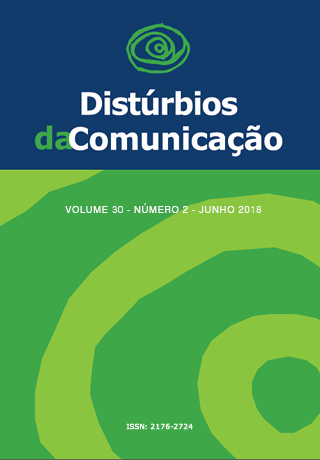The speech-language pathology anamnesis according to the International Classification of Functioning, Disability and Health (ICF)
DOI:
https://doi.org/10.23925/2176-2724.2018v30i2p-252-265Keywords:
ICF, Speech, Language Pathology and Audiology, Health Classifications, Language Development Disorders, ClassificationAbstract
Objective: To identify, through the speech-language pathology anamnesis, the most frequent categories and components related to functionality according to the International Classification of Functionality, Disability and Health (ICF), in Language and Speech Disorders. Methods: a retrospective research was conducted in a partial collection of speech-language interview records from a school clinic, corresponding to 1,000 real cases from 2004 to 2013; then, after statistical calculation, a convenience sample of 110 protocols was defined. The records of the anamnesis were analyzed according to 362 leveltwo categories of the ICF and an arbitrary cut was performed to select the 30 most frequent categories of each component and among all, for the grouping. The Central Limit Theorem and the Law of Large Numbers were used in the statistical treatment for the pre-sampling calculation and the Non-parametric Equality of Two Proportions test was used in the analysis of the frequency. Results: the most frequent categories were: b176 (mental function of sequencing complex movements), d310 (communicating with - receiving - spoken messages), d330 (speaking) and e410 (individual attitudes of immediate family members). Body functions and activities/participation were the most frequent components, while environmental factors and body structure were the less frequent ones. Meanwhile, “learning and speech” and “learning difficulties” were the complaints with more categories in the components. Conclusion: it was possible to identify recurrent ICF categories and components related to the functionality in the speech-language pathology anamnesis. Therefore, this result enhances the support and care of the speechlanguage pathologist with an individual’s health.Downloads
Download data is not yet available.
Downloads
Published
2018-06-29
Issue
Section
Artigos
License
Copyright (c) 2018 Fernanda Chequer de Alcântara Pinto, Ana Maria Schiefer, Jacy Perissinoto

This work is licensed under a Creative Commons Attribution 4.0 International License.









